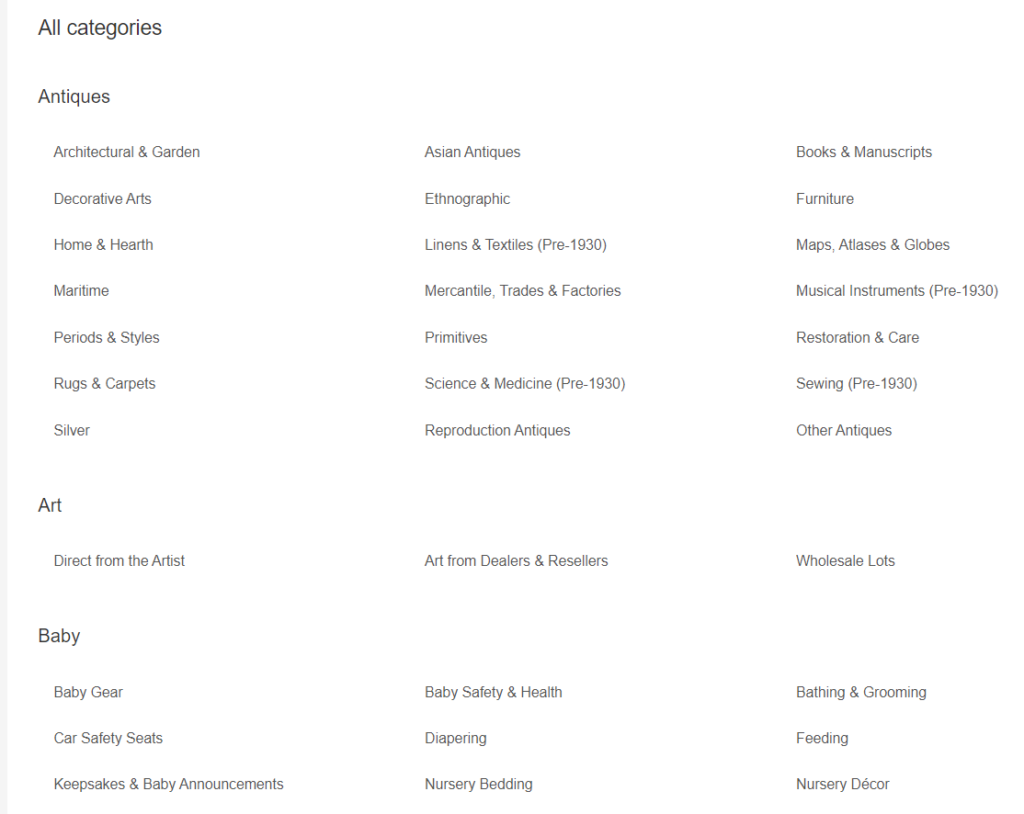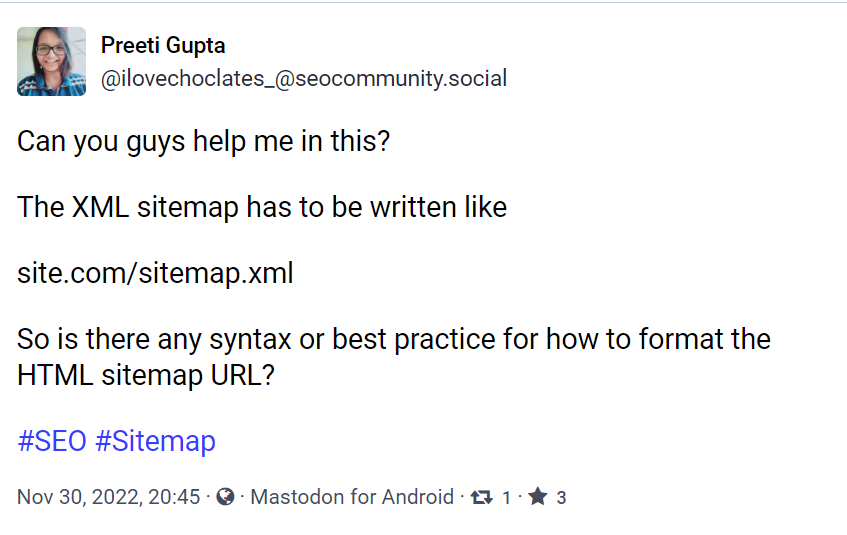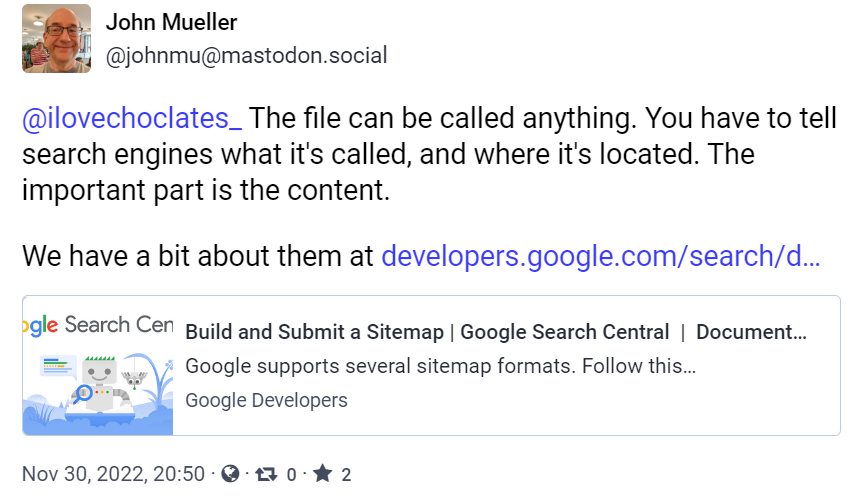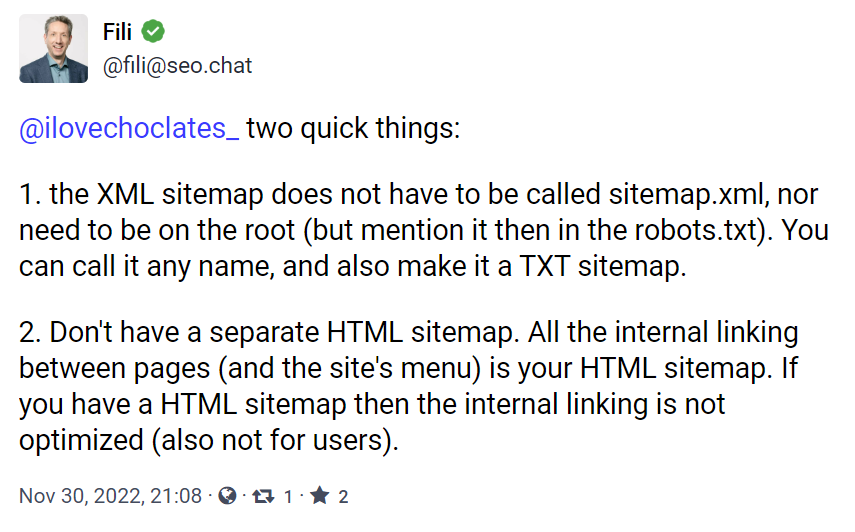HTML Sitemaps: Are they Necessary?
Sitemaps are an important factor in the crawling and indexing process. Almost every website has them and everybody recommends making them.
But the thing is that there are two types of sitemaps, one is XML and another one is HTML. And XML is talked about more than HTML.
So is HTML sitemap any important? Does it matter for SEO purposes? Should you invest your time in making it or not?
By the end of this post, you will be clear on whether or not HTML sitemaps are worth or not.
Table of Contents
Too Long; Didn’t Read
The HTML sitemap is not necessary if your website has a clear navigational structure. You should not focus on making the sitemap. Instead, focus on improving the internal linking structure of your website. If your site has good internal linking, then an HTML sitemap is not necessary, even for bigger sites.
Are HTML Sitemaps Compulsory?
By definition, a sitemap is, “a file where you provide information about the pages, videos, and other files on your site, and the relationships between them. Search engines like Google read this file to crawl your site more efficiently.”
This definition is not specific to HTML or XML sitemap. It is a general definition.
But what’s the definition of an HTML sitemap?
The HTML sitemap is a file that includes links to all the pages on the website. It can be helpful to users while navigating a website. This helps improve user experience as the user can effectively visit any page from the sitemap.
What does Google think of it?
The 2005 Google Blog says, “An HTML sitemap is intended for users of your site. Generally, this type of sitemap provides links to the pages in your site, and may provide descriptions of those pages. We encourage the use of HTML sitemaps. They make it easier for users to navigate your site.”
So this means that HTML sitemaps only serve the sole purpose of user experience.
Matt Cutts was asked about ‘is it still important to offer an HTML sitemap’, here is his response:
Matt says its good for user experience, but think about it this way:
For users to effectively navigate your site, they can use the website navigation such as header, footer, or menus. Why would they need a separate HTML sitemap in order to navigate the site?
If the user is not unable to move around your site just by using the navigation, then there is a serious problem with your site.
Another thing to note is that in order to make an HTML sitemap, you need to make a new page on your site that will include all your links. Why would anyone want to do that if you can polish your internal linking?
Because if your website is small (less than 500 pages), then navigating a site should not be a big deal. But if your website has thousands and millions of pages, then you can put them on the side menu. Just like Google does:

If you are using WordPress, you can mention your archives like this:

Alternatively, you can mention your categories in the side menu.
An example of a sitemap on a separate page can be the eBay sitemap. They have included all their categories in their sitemap, and users can click from there and explore the site:

Another HTML sitemap comes from a calculator website

But the main point is, if the navigation of the website is good enough, then why do they need an HTML sitemap?
I asked Fili, SEO Expert at Search Brothers, What are your thoughts on HTML Sitemap? Who according to you needs one, and do you think they are necessary at all? Here is what he says:

“HTML sitemaps tend to be a tool to compensate for flawed and/or unoptimized internal linking. Historically a lot of webmasters have created HTML sitemaps for either URL discovery and link juice distribution (for search engines) and/or for users. The latter mostly because the site structure and navigation options of the website in question are so poor and unclear, so to assist users finding the content a HTML sitemap may provide the solution. Although in the early days of the World Wide Web this may have made sense, nowadays webmasters need to reframe the concept of HTML sitemaps, not to a standalone duplicate navigation of the site structure but rather to the strategy that all the primary navigation options within a website, also known as the internal linking in the UI and primary content, perform the function of a HTML sitemap. The internal linking is the HTML sitemap.
So instead of making and publishing a separate list of links to function as a HTML sitemap:
1. Consider instead improving the site structure and internal linking of the website.
2. Consider utilizing a clear URL structure, as well as breadcrumbs on every page.
3. Consider that mobile users may have trouble finding the navigation options on your website, so always design the site structure and navigation from a mobile-first perspective.Do this and you never have to worry about creating a HTML sitemap, which generally tend to be a horrible landing page experience from a SEO perspective.”
— Fili, SEO Expert
And there you have it. Fili explained so beautifully that the HTML sitemaps are not the thing to care about.
I also asked on Mastodon about what people think about these sitemaps

And here are some of the responses:
John Mueller said that it is not necessary to name the XML file sitemap.xml. And it is not necessary that put the file in the root folder of the website (website.com/sitemap.xml). You just need to specify where the file is.

Fili said that the internal linking is your HTML sitemap. If you are making an HTML sitemap, then it means that the site is not well internally linked.

John says that HTML sitemaps are not necessary. Every kind of site should have a clear navigational structure. If you think you need an HTML sitemap then you should improve your internal linking structure.

It was a long and wonderful discussion at Mastodon, and I learned a bunch of things here. So here’s a summary for you:
- The XML sitemap doesn’t need to be called sitemap.xml
- The XML sitemap doesn’t have to be in the root directory of the site
- Whenever your sitemap is, make sure you include the reference to robots.txt
- You can make the XML sitemap a TXT sitemap also.
- The HTML sitemap is not necessary if you have a good internal linking structure
- Your internal linking is your HTML sitemap
Final Words
From what I have seen and what expert says, HTML sitemaps are not necessary. If you are an E-Commerce website, users can navigate your website through categories. And if you are a regular website, users can navigate through the menus.
If your internal linking structure is strong, then users will feel no friction in navigating your website.
As we are talking about technical things, do you know why breadcrumbs are important? If your answer is no, then you should definitely read the post on Breadcrumbs.
P.S. Are we connected on social media? I am available on Mastodon, Bluesky, and LinkedIn. And if you fancy sending me emails, then you can!
Suggested Reading: What is Technical SEO, and why is it important?
